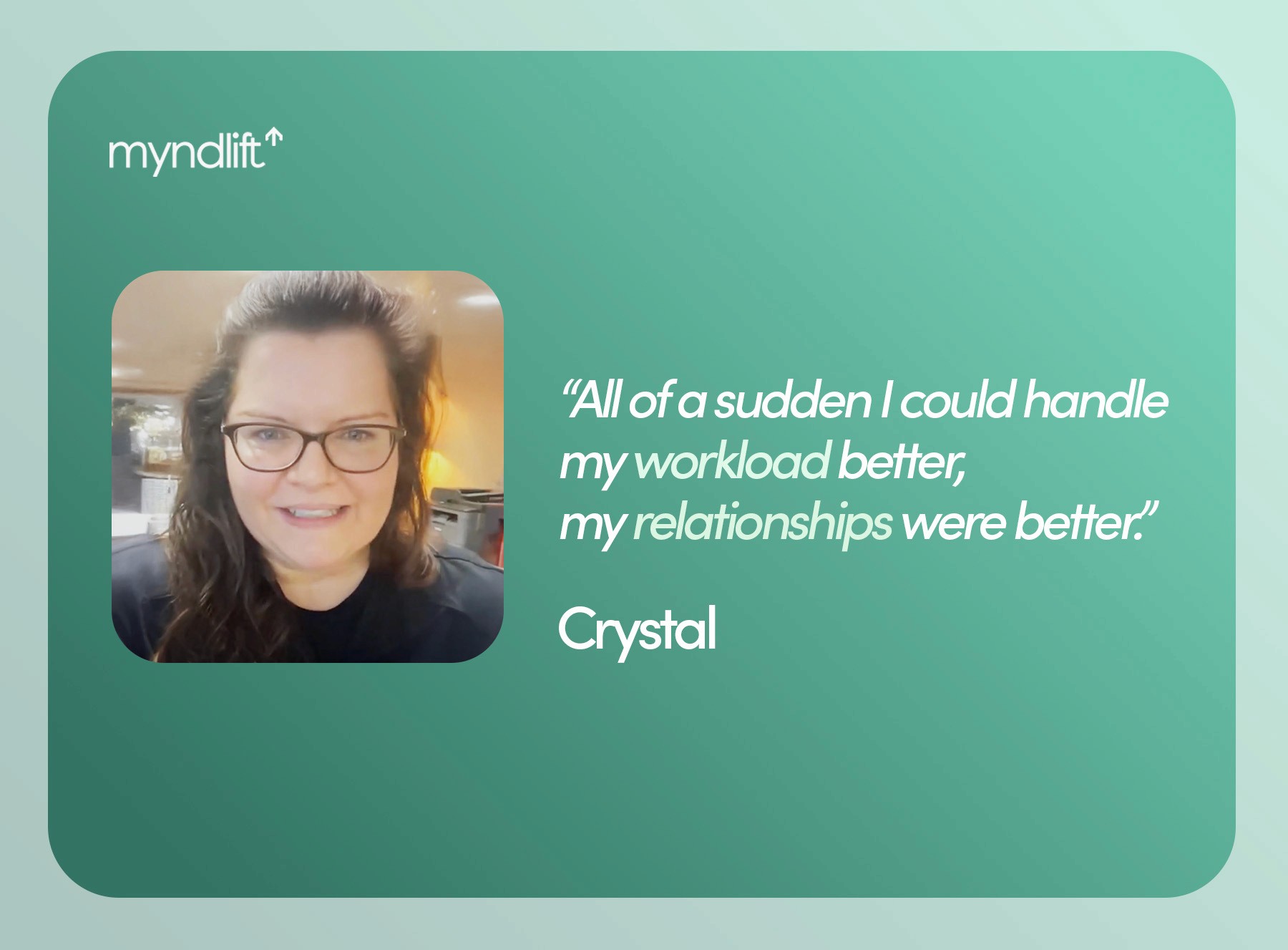Anxiety can be difficult to tackle in any stage of life, but it is particularly challenging to deal with during adolescence. Excessive fears and distress can impair your teen’s ability to function normally and interfere with their academics, family life, friendships, and overall emotional state.
As a parent, you can probably notice the tension and worry on your child's face. And while you might wish that you could simply brush off their fears, you also know that navigating your teens can be challenging enough already. Many things you say or do may end up having the opposite effect, and that's why it's essential to understand how anxiety works, what can alleviate it, and what can exacerbate it.
In her book Helping Your Anxious Teen: Positive Parenting Strategies to Help Your Teen Beat Anxiety, Stress, and Worry, clinical psychologist Sheila Achar Josephs offers research-proven cognitive-behavioral therapy (CBT) strategies that help you in supporting and coaching your teen through anxiety, stress, and worry.
Understanding Anxiety
When your teen experiences a negative thought, they are often consciously or unconsciously frightened or worried about an issue or an outcome. These negative, fear-based thoughts keep the brain in a fearful state and might potentially trigger a fight-or-flight response – the body’s physiological reaction to severe stress and danger.
Physiologically speaking, the fight-or-flight response is triggered by the release of hormones that prepare the body to either stay and deal with a threat or to run away to safety. Their pulse races, breathing speeds up, and pupils dilate – all in response to perceived danger.
This is an expected physical response when your teen is faced with severe stress or what they perceive to be a threat. It can happen in the face of imminent physical danger (such as encountering a growling dog) or as a result of a psychological threat (such as preparing for a big exam at school).
A certain amount of fear in these situations is normal because it can help your teen prepare for real danger. For example, the fear of failure can motivate them to study hard for an exam or practice for a big game. However, there is a fine line between what is considered healthy and unhealthy stress. While one can push your teen to do what they need to work for a desired outcome, the latter can leave them in a perpetual state of distress and anxiety. That state of mind can be enough to activate their fight-or-flight response, causing them to feel crippled or leading them to avoid dealing with the task they must face.
How Cognitive Behavioral Therapy Works
Cognitive-behavioral therapy (CBT) suggests that negative and distressing emotions are caused by certain thoughts, beliefs, and behaviors. In order for these thoughts and emotions to be reduced, they need to be examined and modified. This approach entails looking for a conscious and effective solution to a specific problem.
Let’s say you have a teen who struggles with a perception of themselves as being socially awkward. One CBT strategy used for this type of behavior consists of helping your child learn to identify their automatic negative thoughts and replacing them with more positive, realistic ones. For example, if they think to themselves, “No one at the party will like me,” a helpful replacement statement would be, “People are usually friendly to me if I make an effort to talk to them.”
With practice, your teen can learn to recognize negative thoughts when they occur, realize that they are irrational, and adjust their thoughts to match reality. By changing the way they think, they’ll be better equipped to change the way they feel.
Help Your Teen Challenge Negative Thinking
Anxious thoughts tend to contain "thinking errors", which are negative thinking patterns that can trigger anxiety because they are unrealistic. To help your teen feel less anxious, you need to first guide them to notice the thoughts that trigger anxiety in the first place and then help them learn how to evaluate these thoughts.
Try some, or all, of these CBT techniques:
Socratic Questioning: When negative thoughts arise, encourage your teen to spend at least 1-3 minutes answering each of these questions:
Is this negative thought realistic?
Am I basing my thoughts on facts or on feelings?
What is the evidence for this thought?
Could I be misinterpreting the evidence?
Am I viewing this situation as black and white when it's really more complicated?
Am I having this thought out of habit, or do facts support it?
Decatastrophizing: Catastrophizing is a negative thinking pattern that prompts your teen to imagine the worst possible outcome of an action or event. In order to challenge catastrophic thinking, your teen should try asking themselves, "What if?" or "What's the worst that could happen?" Answering these questions may help them reduce the irrational level of anxiety and highlight that even the worst-case scenario is manageable.
Putting Thoughts on Trial: In this exercise, your teen is supposed to act as a defense attorney, a prosecutor, and a judge for their anxious thoughts.
For example:
The thought: No one at the party will like me.
An argument in defense of the thought (defense attorney): The last time I went to a party, no one talked to me.
An argument against the thought (the prosecutor): People are usually friendly to me if I make an effort to talk to them.
The verdict (the judge): Going to a party might be intimidating, but it's an opportunity to challenge myself and develop social skills. There's no evidence that no one will like me.
Effective Coping Strategies
When you're helping your anxious teen learn to challenge their thoughts and practice new behavior, you are essentially fostering the exact change that occurs during psychotherapy – and doing it when it is most needed, in the moment, when a problem is taking place.
The following strategies presented in the book Helping Your Anxious Teen: Positive Parenting Strategies to Help Your Teen Beat Anxiety, Stress, and Worry are designed to work together for the best results:
1. Connect Before You Correct: There are two key ways you can build a connection with your teen when they are in the midst of an anxious moment: Empathy and active listening.
To empathize means to put yourself in their shoes to try and understand what they might be feeling.
To engage in active listening means to reflect on what you hear them saying to make sure your understanding is correct.
The goal at this point is not to try to change their perspective on their situation, but to show that you genuinely understand what they are thinking and feeling.
Through feeling empathized with, heard, and understood, your teen will be more willing to let you in and allow you to help them.
2. Externalize the Anxiety and Talk Back to It: Talking back to anxiety is designed to call it out for what it is – a false alarm.
So, instead of your teen thinking, “I can't handle things right now,” they can say to themselves, “Anxiety has made me think that this is too tough to deal with, but I don't have to listen to its tricks.”
3. Team Up With Your Teen: Rather than blaming your teen for their behavior, try making anxiety the opponent that you'll work together to defeat.
For example, if your teen wants to avoid an event due to social anxiety, an ineffective way to respond would be, "You can't just miss the event because you are upset. Stop being so stubborn, and come with us." A more effective approach would be, "I see that anxiety has gotten you stuck. Let's see how we can work together to stop anxiety from making you miss the event.”
4. Attend to Non-Anxious Behavior: By paying more attention to non-anxious behavior, you turn the tables on anxiety by rewarding it less. Reward your teen when they are displaying non-anxious behavior, and attend to it. For example, acknowledge brave behavior as soon as it occurs by saying, "I notice that you pushed yourself to go to school today even though you didn't want to go."
What Not to Do
When you see your child struggling, your first instinct might be to try to figure out how you can help them feel better. Or perhaps you attempt to encourage them to let go of their negative thoughts and fears. And although your intentions are good, they may not respond the way you’d like them to and might even accuse you of not understanding what they’re going through. That’s why it’s important to utilize the strategies mentioned above in order to yield more positive outcomes.
If, despite all your efforts, your teen remains stuck in the throes of fear and worry, the author of the book Helping Your Anxious Teen, Positive Parenting Strategies to Help Your Teen Beat Anxiety, Stress, and Worry, suggests you try to avoid doing the following:
Telling Your Teen to Stop Thinking About It: This is an attempt to block the thoughts that cause anxiety. This can have the opposite effect and make those fearful thoughts more frequent and noticeable.
Jumping in With Advice: Advice-giving tells a teen what to think and do but does not teach them how to think and behave when anxious. Teens do best when they learn a systematic way of thinking and responding to anxiety, no matter the specific fear.
Allowing Avoidance of Fears: By avoiding, teens don't learn that the situations they avoid are not necessarily dangerous or intolerable. For example, if you enable a teen with anxiety to stay at home on the day of a test, that teen doesn't learn how to cope with test-taking the next time around.
Giving Excessive Reassurance: Reassuring your teen that everything is alright when they’re feeling anxious may reinforce them to seek reassurance every time they feel a little bit anxious. They may be under the false impression that reassurance gets rid of the anxiety right away, and this can potentially foster a form of avoidance that strengthens fears since it heavily relies on reassurance from an external source to feel relaxed.
However, a small amount of reassurance is okay. For example, a teen who experiences a rapid heartbeat and dizziness due to having a panic attack needs reassurance that their physical symptoms are not dangerous and are just a sign of acute anxiety.
Conclusion
Guiding your teen through feelings of distress and worry can be challenging. Even though you have valuable knowledge and an opportunity to help your child build powerful coping skills, the strategies you use might not work every time.
And that's understandable. Anxiety is a complicated disorder, especially when one is navigating it in their teens. Try to show compassion, be patient, and don't get discouraged. Soon, you and your teen will team up to defeat anxiety together, rather than allowing it to get between you!
Multiple Myndlift users report monthly about changes in their behavior and lifestyle. Get matched with a Myndlift Provider, either by findingone in your area or by enrolling in ourTotal Remote program.
About the author:
Dubravka Rebic
Dubravka Rebic puts a lot of time and energy into researching and writing in order to help create awareness and positive change in the mental health space. From poring over scientific studies to reading entire books in order to write a single content piece, she puts in the hard work to ensure her content is of the highest quality and provides maximum value.
References
Sheila Achar Josephs. Helping Your Anxious Teen: Positive Parenting Strategies to Help Your Teen Beat Anxiety, Stress, and Worry, New Harbinger Publications, 2017.




